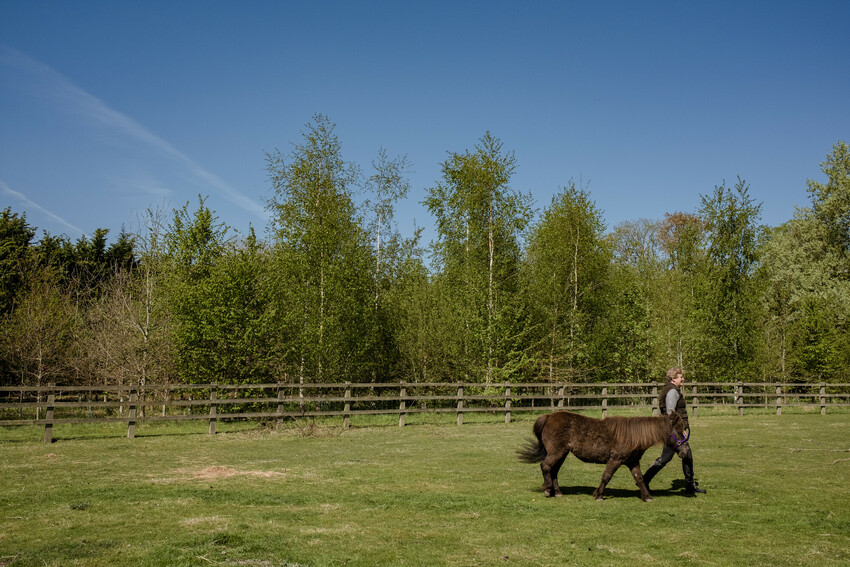
Atypical myopathy (sycamore poisoning) in horses
Atypical myopathy is a dangerous muscle disease in horses caused by eating parts of the sycamore tree.
Atypical myopathy, also called sycamore poisoning or seasonal pasture myopathy (SPM), is an often fatal condition which affects a horse's muscles. As a result, it affects vital organs including the respiratory system and heart.
What causes atypical myopathy?
Atypical myopathy is caused by the ingestion of Hypoglycin A (HGA), a toxin which is found in the sycamore tree (maple or acer pseudoplatanus) and other acer trees.
It's found in the highest concentrations in a sycamore's helicopter seeds in autumn and early winter, and saplings in spring. But it can also be found in the leaves and other parts of the tree.
How much sycamore can kill a horse?
Research suggests that as few as 50 sycamore seeds could be fatal, however evidence does also suggest that different horses seem to have different reactions to Hypoglycin A. Young horses, and those being grazed on parched or overgrazed land, can be particularly susceptible.
Different trees appear to have different levels of the toxin, but we recommend taking thorough measures to reduce the risk of sycamore seeds and seedlings being nearby your horses. You can also test for Hypoglycin A in seeds, leaves and seedlings through the Royal Veterinary College Diagnostic Service.
Signs and symptoms of sycamore poisoning
- Sweating
- Reluctance to walk or move around
- Muscle weakness, stiffness or tremors
- Depression or change in behaviour
- Signs of colic but still eating
- Increased or laboured breathing rate
- A high heart rate
- Dark urine (red or brown colour)
- Collapse
Your horse may appear weak, have difficulty standing and breathing difficulties, but may still want to eat.
If you spot any of these symptoms or are concerned your horse has been poisoned:
- call your vet as quickly as you can
- remove the horse from the field immediately to a well bedded stable area
- remove other horses from the field
- follow your vet's advice carefully. Treatment will be aimed at minimising the clinical effects.
Diagnosis for atypical myopathy
If a horse has atypical myopathy, then they're likely to have an high temperature, fast pulse and rapid breathing. Blood and urine tests will be able to confirm the diagnosis, but treatment may be started immediately as a precaution.
Treatment for atypical myopathy
Early diagnosis and access to treatment is vital. Your vet will try to manage symptoms to give your horse the best chance of survival. This can include pain relief and intravenous fluids via a drip. They will also likely be referred to an equine hospital.
Sadly atypical myopathy is fatal for around around three quarters of horses. Our team offers pet loss support if you're worried about or have lost a horse to atypical myopathy.
Prevent atypical myopathy in horses
Because of the severity of atypical myopathy, it's understandable that you would want to do everything you can to avoid sycamore poisoning. Here are our recommended steps to take:
- Remove sycamore and any other poisonous trees if you can (doing this during the summer months or deepest winter when the toxins are at their lowest is recommended). You can then replace these with native, non-poisonous trees to provide shelter for your horse and minimise the impact on the environment.
- Move horses away from any paddocks with sycamore trees nearby when helicopter seeds are dropping or seedlings are sprouting
- Test for Hypoglycin A in seeds, leaves and seedlings in your field through the Royal Veterinary College Diagnostic Service (there is a fee)
- Fence off areas around poisonous trees and collect and dispose of seeds and leaves safely away from horses
- Keep an eye out for any sycamore seeds and remove them or rake them up as much as possible (a paddock vacuum might be needed)
- Remove young sapling plants if you see them
- Check neighbouring areas so you're aware of sycamores nearby as they can blow some distance in the wind
- In fields where grass is limited, feed forage such as hay off of the floor in haynets or feed racks will help avoid fallen seeds in autumn and early winter when seeds fall
- Avoid turning out your horse in overgrazed fields as this will increase the risk of your horse eating sycamore seedlings
- Do not over stock
- Limit your horse's turnout. Ideally stable horses overnight.
- Be vigilant of the potential signs of this disease and act quickly if your horse becomes unwell
- Ensure you check your horse regularly at least twice daily
- Check your vet insurance is up to date
Page details
Reviewed
• 23 June 2023
Next review
• 23 June 2026







